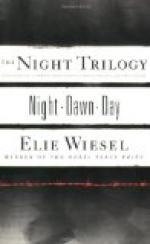With many counsels, many words of cheer,
He on their mission sent his brethren
forth,
Armed with a prophet’s zeal, a brother’s
love,
A martyr’s courage, and the Christian’s
hope
That when life’s duties end, its
trials end,
And higher life awaits those faithful
found.
The days pass on; and now the rising sun
Looks down on bands of pilgrims homeward
bound,
Some moving north, some south, some east,
some west,
Toward every part of India’s vast
expanse,
One clothed in orange robes with every
band
To guide their kindred on the upward road.
But Purna joined the merchants he had
led,
Not moved by thirst for gain, but love
for man,
To seek the Tartar on his native steppes.
Meanwhile the master with diminished band
Crossing the Ganges, backward wends his
way
Toward Rajagriha, and the vulture-peak
Where he had spent so many weary years,
Whither he bade the brothers gather in[12]
When summer’s rains should bring
the time for rest.
[1]Varanassi is an old name of Benares.
[2]It can be no exaggeration to put the number of sacred edifices that burst upon Buddha’s view as he first saw the holy city, at 1,000, as Phillips Brooks puts the present number of such edifices in Benares at 5,000.
[3]In this marriage-feast three well-known incidents in the life of Buddha and his teaching’s on the three occasions are united.
[4]For the best description of the banyan-tree, see Lady Dufferin’s account of the old tree at their out-of-town place in “Our Viceroyal Life in India,” and “Two Years in Ceylon,” by C.F. Gordon Cumming.
[5]Those who saw the illuminations at Chicago during the World’s fair, with lines of incandescent electric lights, can get a good idea of the great illuminations in India with innumerable oil lamps, and those who did not should read Lady Dufferin’s charming description of them in “Our Viceroyal Life in India.”
[6]Lady Dufferin says that the viceroy never wearied, in his admiration of the graceful flowing robes of the East as contrasted with our stiff, fashion-plate male attire.
[7]"The good Lord could not be everywhere and therefore made mothers.”—Jewish saying from the Talmud.
[8]Max Mueller calls attention to the remarkable fact that Dyaus Pittar, the highest name of deity among the ancient Hindoos, is the exact equivalent of Zeus Pater among the Greeks, Jupiter among the Romans, and of “Our Father who art in the heavens” in the divinely taught and holiest prayer of our own religion.
[9]How any one can think that Buddha did not believe in a Supreme Being in the face and light of the wonderful Sutra, or sermon of which, the text is but a condensation or abstract, is to me unaccountable. It is equally strange that any one should suppose he regarded Nirvana, which is but another name for Brahma Loca, as meaning annihilation.




